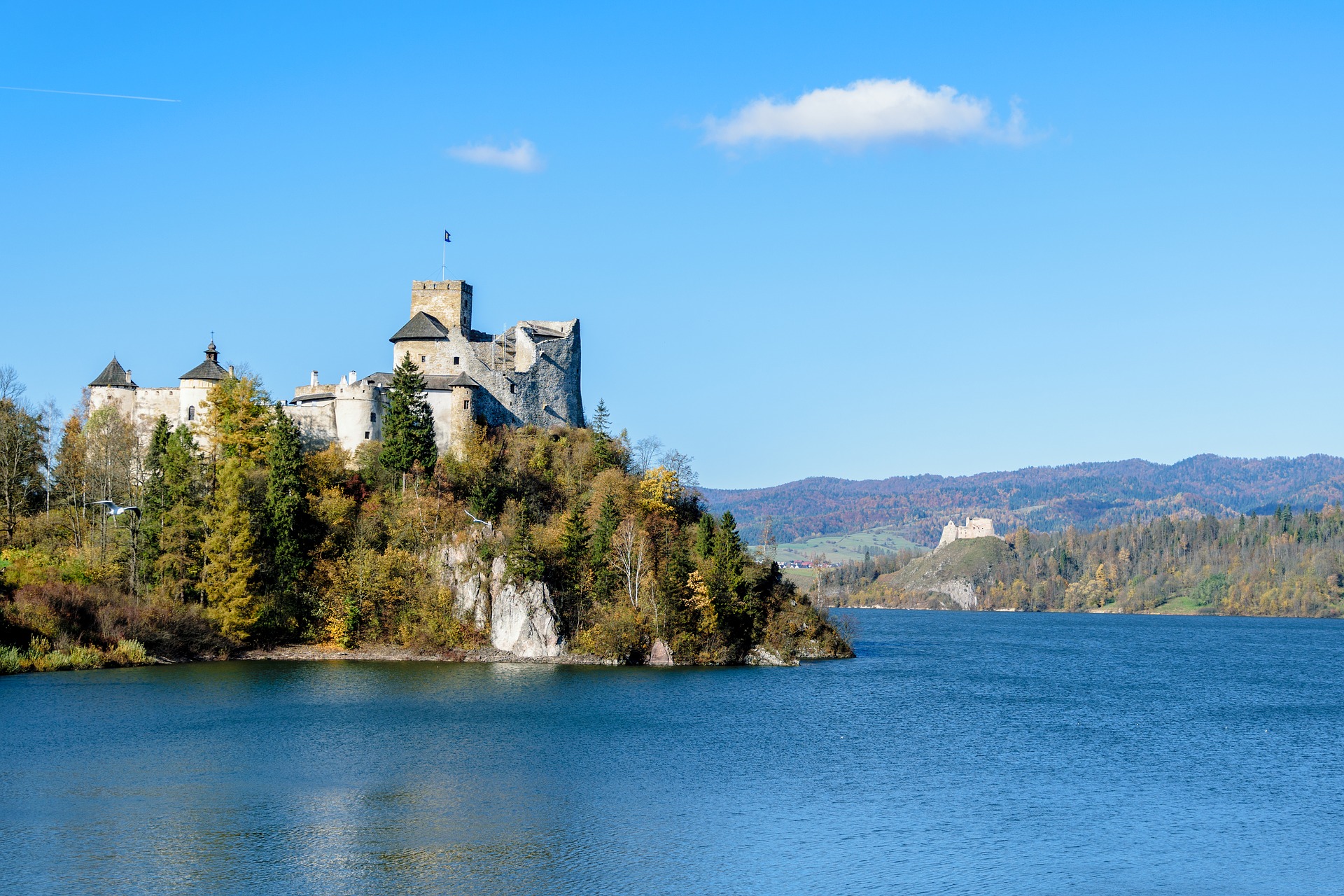The Pearl of The Lubusz Land-Lagow
The beautiful surroundings, historic architecture, and crystal water in the lake make this “gem” of the Lubusz Land a very attractive destination, especially for those who want a quiet vacation away from city crowds. Lagow is not a popular destination as Krakow or Warsaw but is without a doubt worth visit.
History
Here you can feel like in the Middle Ages. The oldest part of the town was built on the isthmus between the two lakes Trześniowskie and Łagowskie, surrounded by the impressive beech forests, currently the Łagowski Landscape Park.
Due to this location, in the Middle Ages Łagów served as a defensive stronghold. Initially, the village was the property of the mysterious Knights Templars, then it passed into the hands of the Brandenburg margraves, and later became the property of the Knights of St. John until 1640.
The Joannites decided to build a castle on the hill, which has since become the most recognizable building in Łagów. In 1640, the village was conquered by the Swedes and nearby Brandenburgers. In 1727 Lagow received city rights, and the last margrave ruling Lagow was Frederick von Hessen-Philippsthal.
After the liquidation of the Order of Saint John in 1819, the Castle was handed over to the von Zastrow family. One of the most important economic events was the construction of the Toporów – Międzyrzecz railway line in 1909, with the station in Łagów. Despite this, the town did not develop, and due to its small size, it lost its town rights in 1932.
After World War II, in 1945, Łagów was incorporated into Poland. In 1969, the Lubuskie Film Summer, the oldest film festival in Poland, was organized for the first time in Łagów. Film screenings take place in the amphitheater on Lake Trześniowskie at the foot of the Castle.
Attractions
Łagów is full of tourist attractions that make visitors feel unique. There are several impressive monuments here, including the Castle of St. John, which overlooks the town. Besides the Castle, there are two Gothic gates from the 15th century. Not only history enthusiasts love this place, and anyone can fall in love with the ancient charm of the town.
Castle
The Joanite Castle is one of the few such wonderfully preserved fourteenth-century buildings in Poland. The town’s biggest attraction is surrounded by defensive walls from the 2nd half of the 14th century. The oldest part of the Castle is a 35-meters high tower, from which you can admire a beautiful view of the lake.
The restored castle is now a compact hotel and restaurant complex with an extraordinary character. The hotel rooms look classy and comfy, and you can consider spending the night here.
Polish and Markish Gates
There are also two medieval defensive gates in Łagów. The first is the Markish Gate, built in the 16th century. Initially, it was made of brick, and in the next century, it was raised by a half-timbered floor. The name of the gate comes from the fact that in the past, it led to the March of Brandenburg.
The second is the Polish Gate, also known as Poznańska Gate from the 15th century, which was part of the fortification of Łagów. The gate is made of brick, in the form of a two-story building. You can drive through the gate, there is a narrow car tunnel, and the passage for people is next to it.
Since the 1960s, the building served as a hostel managed by the Polish Tourist and Sightseeing Society (PTTK). At the turn of the 20th and 21st centuries, the Polish Angling Association took ownership of the building and adapted its rooms for use as guest rooms after a complete renovation.
Railway Viaduct
In the eastern part of the city, we can find a railway viaduct from 1909. This technical monument has three slender arches at the height of 25 m and is stretched over a length of 45 m. It is worth climb to the top if only for the magnificent panoramic of the village and Castle.
Church of John the Baptist
The church of John the Baptist from 1725, is a stone and brick building in the neoclassical style. Inside the temple, we can find matroneum, as well as several tombstones from the second half of the 16th century in the form of the late Renaissance.
Lagowskie and Trzesniowskie Lakes
Unique attractions are the two vast lakes, located entirely in the Łagowski Landscape Park. You can indulge in bathing, sports and water entertainment here, as well as spend time by the water or while walking in the woods.
Lagow is a beautiful town that turns into a massive stage in the summer. There are plenty of cultural events, and the most famous are the Lubuskie Film Summer and outdoor painting. The area around Łagów, like the entire Lubusz Land, is one of the most forested in Poland.
The animal world is abundant here. Wild boars, deer, roe deer, as well as foxes, badgers, martens, and squirrels, live in the nearby forests. To preserve the beauty of the landscape and nature, the Łagowski Landscape Park was created.
For lovers of tasty culinary flavors, Łagów also offers a broad gastronomic base. Cafes and restaurants fit into the tastes of tourists, offering a diverse and extensive menu.
I hope that I encouraged you to visit this fantastic place, which in some way is unique. It is worth going to Lagow in the autumn when there are fewer tourists, and you can rest and walk along the shore.
Booking.com



